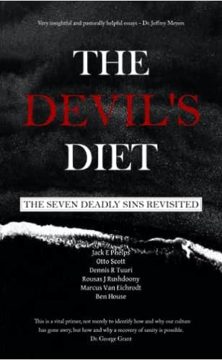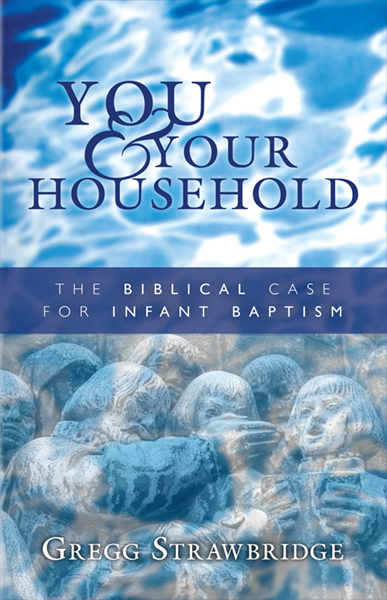Guest Post by Justin Dillehay
“It’s about the journey, not the destination.”
This statement is one of the hallmarks of a certain type of religious person (though they would likely prefer to be called “spiritual”). This person is always searching, always asking, always roaming. If he hears you claim that you’ve found the truth–that you actually have the right answer–he will regard you as intolerant, closed-minded, and arrogant.
You can find an excellent depiction of this never-ending searcher in chapter 5 of C.S. Lewis’s The Great Divorce. In this imaginative novel, people in heaven take a bus trip to hell in order to persuade their damned ghostly friends to repent and return with them to heaven. In the end, almost none of the ghosts choose to leave, but instead persist in the sins that brought them there. Listening to their self-justifications is both fascinating and disturbing.
Lewis casts our never-ending searcher in the form of an apostate Episcopal minister, whose friend “Dick” tries to show him the error of his ways. When Dick invites him to return with him to heaven, the ghost agrees to come, if–and only if–heaven is a place where he can continue his spiritual journey with an open mind. Only if heaven is a place of “free inquiry.”
“No,” Dick responds. “I can promise you none of those things…For I will bring you to the land not of questions but of answers, and you shall see the face of God.”
The ghost objects: “Ah, but we must all interpret those beautiful words in our own way! For me there is no such thing as a final answer…I am not aware of a thirst for some ready-made truth which puts an end to intellectual activity.”
Seeing hope begin to slip away, Dick reasons with him. “Listen…Once you knew what inquiry was for. There was a time when you asked questions because you wanted answers, and were glad when you had found them…[But now] you have gone far wrong. Thirst was made for water; inquiry for truth. What you now call the free play of inquiry has neither more nor less to do with the ends for which intelligence was given you than masturbation has to do with marriage.”
Lewis captures something profoundly biblical in this story. This is the type of person whom the Apostle Paul castigates as “always learning, and never able to come to a knowledge of the truth” (2 Tim. 3:7). Always asking questions, but never really wanting definite answers. Always comparing alternatives, but never willing to choose between them. Always deconstructing other people’s views, but rarely questioning his own mixed motives. Always searching for truth, but somehow resistant to finding it.
It seems rather odd, doesn’t it? The idea of searching for truth but not wanting to find it lest our search be over? You’d think that was the point of the search–to find what we were searching for!
So why would anyone do this?
Answer: because we love searching more than we love truth.
Truth requires us to submit; to stand under it and conform ourselves to it. Truth, we suspect, would require us to acknowledge a reality outside of ourselves that doesn’t depend on what we think and won’t simply be what we want it to be. But searching, at least the kind of searching that we prefer, allows us to chart our own course and act as our own guide, while also giving us the illusion of being more humble than the person who claims to have found the truth.
I say “the kind of searching we prefer,” because there is another kind of searching that God invites us to. The searching of a creature seeking to know his Creator; the searching of a servant seeking to obey her Master’s will. Those who seek like that will find.
But that’s the problem. Apart from the work of the Spirit, there is none who seeks like that, not even one (Rom. 3:11). Apart from Christ, we’re fools. We don’t want the Triune God walking with us on our journey, because he has an annoying tendency to steer us away from paths that seem right to us (Prov. 4:12) and toward paths that will make us wildly unpopular with the very people we want to please (John 5:39-44). So we prefer to walk alone. Or else to walk with peers who won’t “judge” us for the directions we choose to take.
We should ask ourselves the obvious question: “If I resist the very idea of finding truth and ending my search, am I really searching for it? Or am I actually evading it?”
God calls us to a different kind of searching. He calls us to search for truth out of love for truth. And at the end of the day, truth is a person (John 14: 6). To know Jesus is to know the truth, and he delights to be found by those who search for him. Indeed, when you find him, you realize that it was he who was seeking you all along.
When you find the truth as it is in Jesus, you find that it isn’t stagnant. Because he who is truth is also life (John 14:6). Rather than enslaving you, knowing this truth sets you free (John 8:31). Why? Because knowing this truth is what your search was designed for. It’s what your open mind (like an open trap) was meant to close on. To use Lewis’s graphic analogy, if endless searching is like masturbating all your life, finding Jesus is like finally getting married. It’s what your mind is for–a consummation devoutly to be wished.
And unlike the endless search, in which you are always learning but never able to come to a knowledge of the truth, finding Jesus enables you to have the truth yet always to be learning. Because you are finite and Jesus is infinite, there is always room to go deeper. As a Christian, you can say “I have found him whom my soul desires” while also saying “Oh that I might know him!” Christ is both within us as our wisdom (Col. 1:27; 2:3), and before us, beckoning us on to greater knowledge. As Paul put it, “I press on to make it my own because Christ Jesus has made me his own” (Phil. 3:12). It’s an upward spiral into a truth we have already grasped (or better, a Truth whom we have already been grasped by), rather than a downward spiral away from a truth we are seeking to evade.
So let us search well, but search rightly, remembering the goal of our search.
If I may appropriate the words of the Preacher for my own use:
“There is a time to search, and a time to quit searching” (Eccl. 3:6 NLT).
*********************************************************************************
Further reading: The End of our Exploring, by Matthew Lee Anderson.
*********************************************************************************
 Justin and his wife, Tilly, blog at While We Wait.
Justin and his wife, Tilly, blog at While We Wait.
This article was originally published here.
Click on the following link to read one of Tilly’s pieces:
5 Things I Wish I Could Say to Every 16-Year-Old Homeschooled Girl<>

























